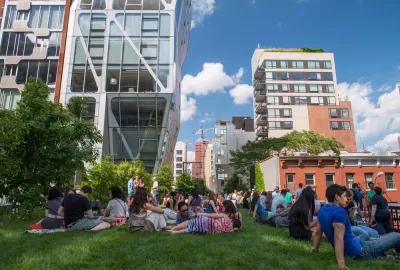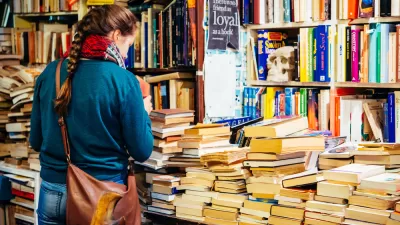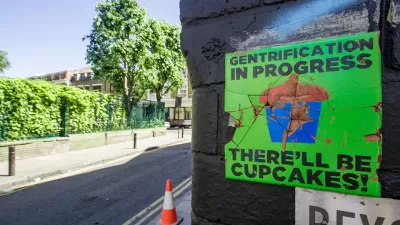A long and ranging article in the New Yorker surveys non-fiction, art, and other manifestations of intellectualism for insight into the plight of the city—to always be cast in some manner of morality tale.

"Cities can't win," declares Adam Gopnik to commence a New Yorker piece on the oscillating poles of the urban crisis in the United States. "When they do well, people resent them as citadels of inequality; when they do badly, they are cesspools of hopelessness."
"The reason that perceptions of cities switch so radically is twofold. Cities are the contradictions of capitalism, spelled out in crowds. They are engines of prosperity and inequality in equal measure, and when the inequality tips poor they look unsavable; when it tips rich, they look unjust. And then cities enfold a subtler contradiction—they shine by bringing like-minded people in from the hinterland (gays, geeks, Jews, artists, bohemians), but they thrive by asking unlike-minded people to live together in the enveloping metropolis."
To explore the paradox, Gopnik surveys a few recent books that can help readers get a fix on the messy and contradictory history of American opinions about cities. First, Gopnik discusses a forthcoming book called, City On a Grid, by Gerard Koeppel, to establish an organizing principle for this discussion of cities. Also, Evan Friss’s forthcoming The Cycling City: Bicycles & Urban America in the 1890s, "wants, in turn, to show us a forgotten parenthesis when the city had not yet yielded to the car. But he ends up showing mainly how terrific research and a feeling for detail can be undermined by the pieties of the contemporary social sciences." With regard to the perpetual offense offered by cities, Friss, " insists that bikes were defeated not by cars but by a growing fear of the potentially radical effects, particularly on women, of the popular bicycle. The decline in cycling had to do with 'its loss of social and cultural appeal.'" Later, Gopnik also delves into the frightening results produced when examining the ruins of Detroit, exemplified by the new book Once in a Great City, written by David Maraniss.
To ask the question of how much physical characteristics affect the character of cities, Gopnik claims that the "greatest celebrations of the grid are the émigré Piet Mondrian’s two New York paintings: 'Broadway Boogie Woogie' and 'Victory Boogie Woogie.' They are part of a forties-New York efflorescence, the blinking, stable, dynamic, and yet still rectilinear energy—an image of energy that breaks with the usual organic forms of ecstatic spirals and gyres. They show the grid as metaphor, and a metaphor, after all, is a cell with a view: the bars in the window bend, and you leave as, and when, you want to."
There's lots more on each of these examples, and a lot more examples, in the article.
FULL STORY: Naked Cities: The death and life of urban America

Alabama: Trump Terminates Settlements for Black Communities Harmed By Raw Sewage
Trump deemed the landmark civil rights agreement “illegal DEI and environmental justice policy.”

Study: Maui’s Plan to Convert Vacation Rentals to Long-Term Housing Could Cause Nearly $1 Billion Economic Loss
The plan would reduce visitor accommodation by 25% resulting in 1,900 jobs lost.

Why Should We Subsidize Public Transportation?
Many public transit agencies face financial stress due to rising costs, declining fare revenue, and declining subsidies. Transit advocates must provide a strong business case for increasing public transit funding.

Wind Energy on the Rise Despite Federal Policy Reversal
The Trump administration is revoking federal support for renewable energy, but demand for new projects continues unabated.

Passengers Flock to Caltrain After Electrification
The new electric trains are running faster and more reliably, leading to strong ridership growth on the Bay Area rail system.

Texas Churches Rally Behind ‘Yes in God’s Back Yard’ Legislation
Religious leaders want the state to reduce zoning regulations to streamline leasing church-owned land to housing developers.
Urban Design for Planners 1: Software Tools
This six-course series explores essential urban design concepts using open source software and equips planners with the tools they need to participate fully in the urban design process.
Planning for Universal Design
Learn the tools for implementing Universal Design in planning regulations.
Caltrans
Smith Gee Studio
Institute for Housing and Urban Development Studies (IHS)
City of Grandview
Harvard GSD Executive Education
Toledo-Lucas County Plan Commissions
Salt Lake City
NYU Wagner Graduate School of Public Service





























